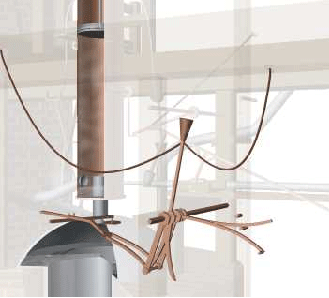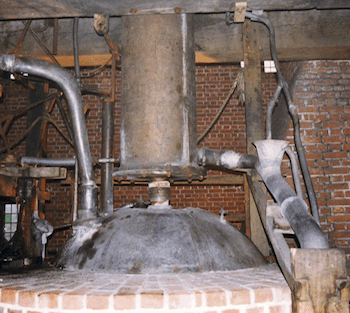The Newcomen engine works in a cycle. As the piston is pulled upwards the cylinder fills with steam from the boiler below,

cold water is then injected into the cylinder,

and this creates a vacuum causing air pressure to push the piston down and lift up the pump on the other end of the beam, with its load of water.

Later steam engines worked with high pressure steam pushing from each side of the piston in turn, but the operation of the Newcomen engine is quite different. The piston is only pulled up by the weight of the pump pulling down on the other end of the beam. The boilers used by Newcomen created no more pressure than a kettle, and so the steam was effectively 'pulled' into the cylinder by the low pressure created by the rising piston.
Starting the engine was a lengthy process and involved passing steam into the cylinder and out through the 'eduction' valve until the cylinder was thoroughly warmed up.
Even when the engine had started, the driver still had to make constant adjustments to keep it running properly. Air dissolved in the water mixes with the steam and would eventually lead to the engine stopping if left unattended.
